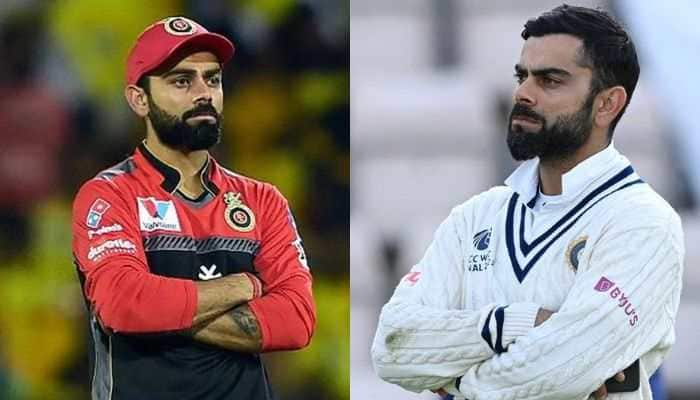`Two-front war against India possible`
The growing proximity between India and the United States is pushing Pakistan closer to China.
Trending Photos
)
 In 1950, Pakistan became one of the first countries to recognise the People`s Republic of China. The ties between China and Pakistan continued to grow after that, for which the credit goes to India. Military, technical, or economic, China has provided Pakistan with all the assistance. The growing proximity between India and the United States is pushing Pakistan closer to China.
In 2006, Pakistani Ambassador to the United States Husain Haqqani told a think-tank, “For China, Pakistan is a low-cost secondary deterrent to India… For Pakistan, China is a high-value guarantor of security against India."
In an exclusive interview with Kamna Arora of Zeenews.com, Dr Harsh V Pant discusses the limitations as well as repercussions of the ties between China and Pakistan.
Harsh V Pant teaches at King`s College London in the Department of Defence Studies and is an Associate with the King`s Centre of Science and Security Studies. Recently, he has been a Visiting Professor at the Indian Institute of Management, Bangalore.
Kamna: Recently, Pakistan and China launched joint war games along the Rajasthan border. How should India read the presence of Chinese troops along its western border?
Dr Pant: China and Pakistan have been very close allies for far too long, so the latest war games are just a continuation of an old trend. India should view growing Chinese presence in Pakistan with concern, not just these war games. In its own war gaming, Indian armed forces have been and should indeed take into account the possibility of a two-front war against India, and prepare accordingly.
Kamna: How is China taking advantage of the tensions between Pakistan and the United States?
Dr Pant: As Pakistan comes under pressure from the US, it is signalling that it has other options and China is doing its best to project itself as a benign friend of Pakistan. With India’s recent rise as an economic and political power of global significance, Sino-Indian ties are now at a critical juncture as India tries to find the right policy mix to deal with its most important neighbour. Meanwhile, Chinese strategists remain concerned about the US’ attempts to encircle China and the profound effect on Chinese security of an eventual integration of India into an American alliance.
As India struggles to emerge as a global power with an ambitious foreign policy agenda, China can effectively scuttle Indian ambitions by continuing with its diplomatic and military support to Pakistan. Much to India’s chagrin, China has given enough indications in the recent past that it wants to follow that path.
Kamna: Do you think Pakistan overestimates the support it is likely to get from China?
Dr Pant:There are indeed limits to China-Pakistan ties. The relationship remains fundamentally asymmetrical: Pakistan wants more out of its ties with China than China is willing to offer. Today, when Pakistan’s domestic problems are gargantuan, China would be very cautious in involving itself any more. Moreover, the closer China gets to Pakistan, the faster India would move in to the American orbit. Amid worries about the potential destabilising influence of Pakistani militants on its Muslim minority in Xinjiang, China has taken a harder line against Pakistan.
Chinese involvement in Pakistan is unlikely to match the US profile in the country in the short to medium term and it is not readily evident if China wants to match the US in this regard. Not surprisingly, while Islamabad is seeking greater engagement with Beijing, the latter remains wary of being drawn into a tighter relationship. But flirtation with Pakistan gives China crucial space for diplomatic manoeuvring vis-à-vis India and the US.
Kamna: Where does India stand with respect to its military modernisation when compared to China and Pakistan?
Dr Pant:The rise of the Chinese military has been much faster than many were predicting just a year back. After years of top-secret development, the J-20 — China’s first radar-evading jet fighter — was put through preliminary, but also very public, tests earlier this year in January just when US Secretary of Defence Robert Gates was in Beijing to revise the US-China military ties. China’s nuclear deterrent, estimated at no more than 160 warheads, has been redeployed since 2008 onto mobile launchers and advanced submarines that no longer are sitting ducks for attackers. Multiple-warhead missiles are most likely to be the next phase in the evolution of Chinese nuclear policy.
At the same time, China has made significant gains towards fielding a missile system designed to sink a moving aircraft carrier from nearly 2,000 miles away. The “carrier-killer” missile and a new showpiece stealth fighter jet may not be a match for US systems, but they represent rapid advances for China’s home-grown technology and defence manufacturing. China also plans to launch up to five aircraft carriers in coming years.
Compared to this, India`s military modernisation has barely begun. This year the Indian government has allocated only 1.8 percent of the GDP to defence, though ostensibly the military expenditure has gone up by 11.58 percent. This is only the second time in over three decades that the defence to GDP ratio has fallen below 2 percent of the GDP. This is happening at a time when India is expected to spend USD 112 billion on capital defence acquisitions over the next five years in what is being described as “one of the largest procurement cycles in the world”. But the defence acquisition process remains mired in corruption and bureaucratese. A series of defence procurement scandals since late 1980s have also made the bureaucracy risk averse, thereby delaying the acquisition process.
The capability differential between China and India is rising at an alarming rate. This will continue to constrain India’s rise as a major regional and global player of any significance.
Kamna: Can India alter the dynamics of the relationship between Pakistan and China to suit its own needs?
Dr Pant:China and India share a range of objectives vis-à-vis Pakistan, including preventing the rise and spread of extremism, fostering economic development in Af-Pak, overall political stability and social cohesion in Pakistan, and safety of Pakistan’s nuclear assets. Of all the major powers it is China that can effectively leverage its growing economic profile in Pakistan to ensure Pakistan’s security establishment cedes power to the civilians, allowing the Pakistani state to function effectively.
China shares many of the interests of other major powers such as the US, Russia and India vis-à-vis Central Asia, including access to Central Asian energy resources, controlling the spread of radical Islam, ensuring political stability, and strengthening of regional economies. The continuing instability in Pakistan and Afghanistan poses a serious challenge to the realisation of these objectives. Major powers with interest in Central Asia, including China, do not have much sympathy for Pakistani policy of strengthening radical Sunni groups.
India can engage with China on these issues as Pakistan`s domestic troubles continue to manifest themselves in myriad ways. So far, China has refused to engage India on Pakistan-related issues and it`s highly unlikely that it will do so in the near future.
In 1950, Pakistan became one of the first countries to recognise the People`s Republic of China. The ties between China and Pakistan continued to grow after that, for which the credit goes to India. Military, technical, or economic, China has provided Pakistan with all the assistance. The growing proximity between India and the United States is pushing Pakistan closer to China.
In 2006, Pakistani Ambassador to the United States Husain Haqqani told a think-tank, “For China, Pakistan is a low-cost secondary deterrent to India… For Pakistan, China is a high-value guarantor of security against India."
In an exclusive interview with Kamna Arora of Zeenews.com, Dr Harsh V Pant discusses the limitations as well as repercussions of the ties between China and Pakistan.
Harsh V Pant teaches at King`s College London in the Department of Defence Studies and is an Associate with the King`s Centre of Science and Security Studies. Recently, he has been a Visiting Professor at the Indian Institute of Management, Bangalore.
Kamna: Recently, Pakistan and China launched joint war games along the Rajasthan border. How should India read the presence of Chinese troops along its western border?
Dr Pant: China and Pakistan have been very close allies for far too long, so the latest war games are just a continuation of an old trend. India should view growing Chinese presence in Pakistan with concern, not just these war games. In its own war gaming, Indian armed forces have been and should indeed take into account the possibility of a two-front war against India, and prepare accordingly.
Kamna: How is China taking advantage of the tensions between Pakistan and the United States?
Dr Pant: As Pakistan comes under pressure from the US, it is signalling that it has other options and China is doing its best to project itself as a benign friend of Pakistan. With India’s recent rise as an economic and political power of global significance, Sino-Indian ties are now at a critical juncture as India tries to find the right policy mix to deal with its most important neighbour. Meanwhile, Chinese strategists remain concerned about the US’ attempts to encircle China and the profound effect on Chinese security of an eventual integration of India into an American alliance.
As India struggles to emerge as a global power with an ambitious foreign policy agenda, China can effectively scuttle Indian ambitions by continuing with its diplomatic and military support to Pakistan. Much to India’s chagrin, China has given enough indications in the recent past that it wants to follow that path.
Kamna: Do you think Pakistan overestimates the support it is likely to get from China?
Dr Pant:There are indeed limits to China-Pakistan ties. The relationship remains fundamentally asymmetrical: Pakistan wants more out of its ties with China than China is willing to offer. Today, when Pakistan’s domestic problems are gargantuan, China would be very cautious in involving itself any more. Moreover, the closer China gets to Pakistan, the faster India would move in to the American orbit. Amid worries about the potential destabilising influence of Pakistani militants on its Muslim minority in Xinjiang, China has taken a harder line against Pakistan.
Chinese involvement in Pakistan is unlikely to match the US profile in the country in the short to medium term and it is not readily evident if China wants to match the US in this regard. Not surprisingly, while Islamabad is seeking greater engagement with Beijing, the latter remains wary of being drawn into a tighter relationship. But flirtation with Pakistan gives China crucial space for diplomatic manoeuvring vis-à-vis India and the US.
Kamna: Where does India stand with respect to its military modernisation when compared to China and Pakistan?
Dr Pant:The rise of the Chinese military has been much faster than many were predicting just a year back. After years of top-secret development, the J-20 — China’s first radar-evading jet fighter — was put through preliminary, but also very public, tests earlier this year in January just when US Secretary of Defence Robert Gates was in Beijing to revise the US-China military ties. China’s nuclear deterrent, estimated at no more than 160 warheads, has been redeployed since 2008 onto mobile launchers and advanced submarines that no longer are sitting ducks for attackers. Multiple-warhead missiles are most likely to be the next phase in the evolution of Chinese nuclear policy.
At the same time, China has made significant gains towards fielding a missile system designed to sink a moving aircraft carrier from nearly 2,000 miles away. The “carrier-killer” missile and a new showpiece stealth fighter jet may not be a match for US systems, but they represent rapid advances for China’s home-grown technology and defence manufacturing. China also plans to launch up to five aircraft carriers in coming years.
Compared to this, India`s military modernisation has barely begun. This year the Indian government has allocated only 1.8 percent of the GDP to defence, though ostensibly the military expenditure has gone up by 11.58 percent. This is only the second time in over three decades that the defence to GDP ratio has fallen below 2 percent of the GDP. This is happening at a time when India is expected to spend USD 112 billion on capital defence acquisitions over the next five years in what is being described as “one of the largest procurement cycles in the world”. But the defence acquisition process remains mired in corruption and bureaucratese. A series of defence procurement scandals since late 1980s have also made the bureaucracy risk averse, thereby delaying the acquisition process.
The capability differential between China and India is rising at an alarming rate. This will continue to constrain India’s rise as a major regional and global player of any significance.
Kamna: Can India alter the dynamics of the relationship between Pakistan and China to suit its own needs?
Dr Pant:China and India share a range of objectives vis-à-vis Pakistan, including preventing the rise and spread of extremism, fostering economic development in Af-Pak, overall political stability and social cohesion in Pakistan, and safety of Pakistan’s nuclear assets. Of all the major powers it is China that can effectively leverage its growing economic profile in Pakistan to ensure Pakistan’s security establishment cedes power to the civilians, allowing the Pakistani state to function effectively.
China shares many of the interests of other major powers such as the US, Russia and India vis-à-vis Central Asia, including access to Central Asian energy resources, controlling the spread of radical Islam, ensuring political stability, and strengthening of regional economies. The continuing instability in Pakistan and Afghanistan poses a serious challenge to the realisation of these objectives. Major powers with interest in Central Asia, including China, do not have much sympathy for Pakistani policy of strengthening radical Sunni groups.
India can engage with China on these issues as Pakistan`s domestic troubles continue to manifest themselves in myriad ways. So far, China has refused to engage India on Pakistan-related issues and it`s highly unlikely that it will do so in the near future.
Stay informed on all the latest news, real-time breaking news updates, and follow all the important headlines in india news and world News on Zee News.
Advertisement
Live Tv
Advertisement







)
)
)
)
)
)
)
)
)
)
